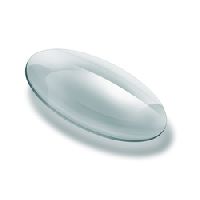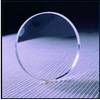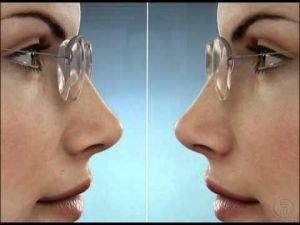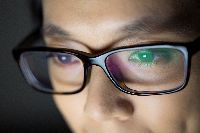
scratch resistant glasses
Scratch resistant glasses use of eyeglass lenses can compromise your vision and detract from your appearance. Scratch-resistant coatings (also known as a "hard coat") can be added to the front and back surfaces of your lenses to increase their scratch resistance and durability and protect the investment you've made in your eyewear.
...more
polycarbonate lenses
Polycarbonate lenses are ten times more impact resistant than conventional plastic or glass lenses. While impact resistant does not mean shatterproof, polycarbonate lenses can give an extra level of protection to lens wearers who have active lives or participate in sports. Polycarbonate is the material preferred for children and teenagers—as well as people who work in certain manufacturing occupations.
...more
Plastic lense
Plastic lenses are much lighter and less breakable than glass lenses. Traditional plastic lenses are made from a hard resin that is cast or molded in the wet state into lens blanks. These plastic blanks can be ground into specific shapes to fit any lens frame. The most common plastic lens material is called CR-39.
...more
multifocal lenses
Like bifocal lenses, multifocal lenses are used primarily to help presbyopic people focus at distance and near with one lens. Multifocal lenses have no segment and no lines in the lenses; the power from the top of the lens to the bottom is smoothly transitioned from distance viewing power through near viewing power, as the user looks downward through the lens. Multifocals have the advantage of offering clear vision over a large range of distances, not just two distances, so multifocal users can see, far, mid-range (computer screen distance) and near all in one lens with no line. Multifocal lenses come in many designs and styles. Typically the multifocal lenses that are the easiest to adapt to and have the widest mid-range and reading areas are more expensive. For people who have not had success adapting to multifocal lenses, it is important to know that there are four factors that determine success in multifocal adaptation: Brand of Multifocal - Higher-end multifocals are much more successful than lower-end multifocals and can make the difference between adaptation and non-adaptation. Multifocal measurement and pupillary distance - Measurements for multifocal lenses must be taken by a trained professional. Make sure the optical centers of the frames are properly marked; the pupillary distance (distance from center of one pupil to center of the other pupil) is measured monocularly and binocularly (for each eye individually and together). Improper measurements taken for multifocal lenses are the most frequent reason for non-adaptation. Frame measurement - Frame measurements are sent into the laboratory properly and frames are adjusted properly on patients face before marking optical centers of lenses. Patient motivation - Often patient motivation is the determining factor in adaptation to these lenses. If you take the time and wear the lenses regularly without switching to an old pair or giving up, you can adjust. Remember, there is an adjustment period for bifocal lenses also, so which type of lens will you spend your time adjusting to? If a patient puts their time and effort into adjusting to progressive multifocal lenses, they probably will never have to be in a bifocal ever! A multifocal lens gradually changes curvature, thus power as you go towards the bottom of the lens. The sides Outlined are areas where vision may be warped or Distorted due to the severe curvature change; The center areas are where vision is clear; distance At top parts of lens, midrange in middle and near Towards the bottom.
...more
high index lens
High index lens is an advanced material that provides significant advantages over traditional plastic or glass lenses. High-index lenses are:Thinner, so you'll have slimmer glasses and can choose from a wider choice of frames.
...more
coloured lenses
These are available in both prescription and non prescription. With these lenses you can change your eye colour to suit the look you are trying to create.
...more
bifocal lens
Bifocal Lens it is called a bifocal. The term bifocal means literally "Two Focuses". It is meant to describe eyeglass lenses that enable the user to see clearly at two different distance ranges through one lens. Benjamin Franklin is credited with inventing the first bifocal lens by gluing two lens halves from different prescriptions together. Bifocals are used for many reasons, but the main reason is Presbyopia, a condition that affects every adult above the age of 40 years. Presbyopia is when the human near focus system gradually becomes unable to focus on objects that are closer in. At that point, the prescription that helps people to see objects clearly at distance is no longer sufficient to see close objects also.
...more
Anti Reflection Lenses
Anti reflection lenses coatings increase light transmission through the lens, significantly reduce light reflections from the front of your lenses, and virtually eliminate the reflections from the back of your lenses.
...moreBe first to Rate
Rate ThisOpening Hours